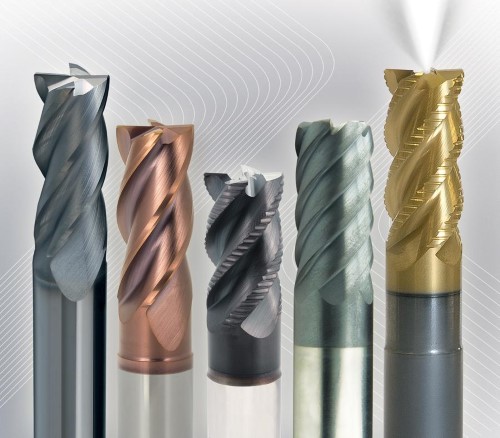September 08, 2022

M&M Sales and Equipment is an expert in cutting tools, offering end mills and other cutting tools and accessories from Sandvik, Guhring, Drillco and other leading manufacturers in West Texas, including Odessa, Lubbock, Amarillo and Ft. Worth. This guide will help you choose the right end mill to meet your needs.
It's no secret that the machinists speak their own languages and even math basics. The world's population starts at 1. Ask a machinist how they measure , and they'll explain that it all begins at one-thousandths of a inch (0.001")
The same applies when we speak about cutting tools. A layman may not understand the terminology used in cutting. {In the world outside, the letters pcd ball end mill are often utilized interchangeably, but this could cause confusion when it comes to the specific tooling required in CNC machines. To cut through materials Industrial CNC (Computer Numeric Control), machines use cutting tools that rotate, referred to as endmills.
What is an endmill and how is it different from drill bits? End mills can cut vertically, while drill bits can be inserted vertically into materials to create holes.
This is a visual that demonstrates the difference between an end mill and a standard drill bit.
Selecting the Right End Mill for Your Job
End mills serve a function. Each tip shape provides a different clearing path for various applications. The decision of which end mill to choose will depend on the project, what kind of material has to be cut and the desired surface finish. An incorrect tool could damage your work piece and force you to throw away the entire batch. This is not only a waste of time but it can also cost money for your company.
There's a lot to consider when selecting the ideal end mill for your CNC operation. We've distilled some of the most important points from Machining News to help you select the right end mill:
End Mill Length
First, decide the depth the end mill will cut. Select the length of the end mill that will make the cut. Why? The tool's stability can be greatly enhanced by selecting the shortest length. This will permit faster and more intense feeds as well as reducing the potential for the tool to chatter.
End Mill Materials
High-speed steel (HSS) and carbide are two of the most widely used materials in the making of end mills. HSS is beneficial in older slow, less rigid machines as also in one-off or very short run production. Although it's more slow than the other types of materials HSS is more affordable and less brittle. It also can withstand instabilities better. Carbide is preferred for CNC machine tools , where higher speeds, less tooling adjustments and greater productivity are expected. They are also more economical due to the fact that they have a longer tool life and shorter cycles.
Flute Play
The flutes are the helical grooves that wrap around the edges of carbide end mill speeds and feeds. A smaller number of flutes (2-3 flute tools) will provide more flute space for long-lasting chipping materials like aluminum. A higher number of flutes can reduce flute space but offer more productivity for shorter-chipping materials like medium to high carbon iron or steel. For steel, stainless alloys, high temp steel as well as iron, a four flute endmill is the best choice for slotting applications and can be a fantastic general-purpose tool. For projects which require a smaller depth of cut, higher flute counts are suggested to ensure that chips are removed.
End Geometry
The tool's success depends on the choice of the right pcd end mill. Paying close attention to the materials that the manufacturer recommends for a given tool can aid in ensuring your success. The manufacturer's recommendations regarding the material's speed and feed are equally important.
End Mill Coatings
Coatings help in reducing friction as well as protecting the carbide from the heat produced in cutting. Certain coatings are better for certain materials. It is important to pay attention to the manufacturer├óŌé¼Ōäós recommendations to ensure that you are using the appropriate coating.
Tool Life
It's not always better to be cheaper. If you're dealing with high-production and heavy workloads it's essential to invest in the right tooling that can keep up with the volume of work. Inadequate or cheap tooling can cause wasted material, scrap, and lost expenditure on tools and wear and tear on your CNC machine.
Posted by: GiannaeReyes at
10:26 AM
| No Comments
| Add Comment
Post contains 752 words, total size 5 kb.
35 queries taking 0.019 seconds, 70 records returned.
Powered by Minx 1.1.6c-pink.









